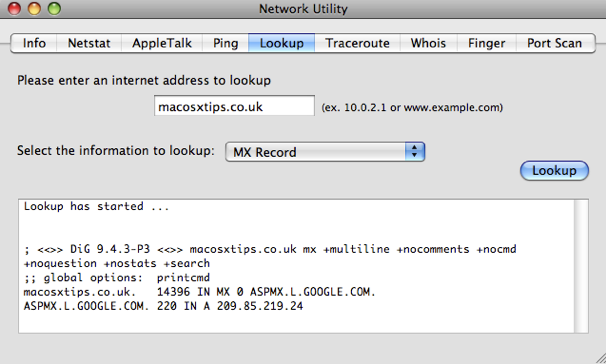Ace Utilities 5 3 0 Set Up Keyboard Shortcuts

- Internet running slow? I tell you how to speed it up for free.
- Bash is a Unix shell and command language written by Brian Fox for the GNU Project as a free software replacement for the Bourne shell. First released in 1989, it has.
DOS 3. 3, Pro. DOS & Beyond – Apple II History. MORE DISK STORAGEIn August of 1. Apple released an upgrade for DOS, to version 3. This upgrade was an important one. It consisted of not only a new System Master disk, but a hardware upgrade chip as well. The original disk drive had been designed with the ability to read and write 3. At 2. 56 bytes possible per sector, this made the disk capable of holding 1.
K of information. Since it was designed to have DOS present on each disk in the first three tracks, and the catalog took up another entire track, there was actually only 1. K available for data storage. Steve Wozniak, the author of the original DOS disk driver (RWTS), had found a way to increase the storage capacity of Apple floppy disks. Changing slightly the method used for encoding data on the disk made it possible to have 1. DOS 3. 1 and 3. 2. This resulted in a disk that could now hold a maximum of 1.
You can also use your handshake gesture to set personal space boundaries and indicate that your interlocutor should be an arm’s length away from you once you do. When you installed Microsoft’s Word Flow keyboard on your iPhone, you probably thought it was an app or extension. Turns out, it was an “experiment,” an.

We found PeaZip's interface to be well-designed and user-friendly. Once installed, the right mouse button brings up the traditional Explorer menu with basic PeaZip.
K of data (1. 24. K excluding DOS and the catalog track), a 2. The remarkable thing about this upgrade was that the disk drives themselves did not need to be changed to make this possible. Only the ROM program on the Disk II controller card needed to be changed to make the move to DOS 3.
Those users who bought this upgrade to DOS 3. ROM chip on the disk controller (or have their dealer do it for them). An updated and greatly expanded version of the DOS manual was also included in the DOS 3. The “COPY” program (used to copy entire disks) was translated to Applesoft as “COPYA” for those II Plus users who didn’t have access to Integer BASIC.
The newer COPY programs also worked properly on single drive systems (previously, you had to have two disk drives in order to use this program to copy a disk). To allow users to startup their older 1. DOS 3. 2 disks, a binary program called “BOOT1. Also, a separate disk called “BASICS” was included that could be used in the same way as a pre- boot for 1. It could have been incorporated into DOS 3.
DOS larger than the earlier versions. Instead, Apple supplied on the System Master disk a conversion program called “MUFFIN” to allow files to be moved from 1.
Enterprising hackers in the Apple II world made modifications to MUFFIN and created DE- MUFFIN, a DOS 3. FID, written entirely in assembly language, allowed easier copying of files, particularly Text and Binary files that couldn’t simply be LOADed and SAVEd from one disk to another, as could Applesoft and Integer programs. The name “FID” was odd, however. The Apple manuals said it stood for FIle Developer, but Rich Williams (who also wrote this utility) said that the original name of the program was FISHEAD (which stood for FIle Shower, HElper, And Duplicator).
Apple Marketing said he couldn’t name a program FISHEAD, so he changed it to FID, which they said was okay. It really stood for Fishead In Disguise (or Fishead In Drag by some within Apple).
One method that was used to overcome this inconvenience was to piggyback the old and the new disk controller ROMs and use a switch to toggle between systems. The most elegant solution I’ve found was a ROM chip that plugged into a special card (the ROMPlus made by Mountain Hardware, or the ROMBoard made by Andromeda). A call to a memory location would switch between DOS 3. Soft Ctrl Systems, the company that sold this Dual DOS ROM also sold ROMs that gave instant access to an Applesoft renumber and merge program, an Applesoft editor, and a specialized disk command menu and disk map. Since by this time the Language Card was available (this added 1. K of bank- switched RAM in parallel with the Apple II ROM), there were two groups of users to service on bootup.
For Apple II Plus owners, there was a file named “INTBASIC”, which would load Integer BASIC onto the Language Card. For the older Apple II (non- Plus) users, the file “FPBASIC” would be loaded onto the Language Card when the DOS 3. Applesoft available. The last version of the DOS 3. Master disk, released with the Apple IIe, used a new utility to load these files which was significantly faster than the standard DOS BLOAD command. DOS 3. 3 – MISCELLANEOUSA rumor expressed in a letter to Call- A. P. P. L. E. The writer of the letter stated that changes made to DOS up until that time were done by patching it with the mini- assembler in the Monitor.
John Arkley at Apple stated that there always was a source code listing for DOS. The rest was merely attached to RWTS and “conditionally” assembled (meaning that the code would be assembled one way with certain flags set at the beginning of the file, and another way if they were set differently).
They made a few patches to fix bugs in the File Manager and Main DOS routines, but did so only in very specific places, to avoid moving undocumented entry points that programmers had been using up to that point. Car Bluetooth Installation East London. In this version, the FPBASIC and INTBASIC files were 4. The changes introduced at that time included code to turn off the IIe 8. APPEND command. This fix reportedly introduced an even worse bug, but as the command was not heavily used it did not make much of an impact on most programmers. The APPEND fix was applied by utilizing some formerly unused space in the DOS 3. The third version of DOS 3.
Pro. DOS. The only mention of this in the press was in the DOSTalk column of Softalk magazine. This final version of DOS 3. APPEND bug, using another bit of unused space in DOS 3. With regard to the FPBASIC and INTBASIC files: There were three differences between the 5. INTBASIC file. Firstly, the $F8.
FFFF section was removed. This area was the code for the Monitor, and with the changes introduced in the Apple IIe, it could cause some things to “break” if the older Monitor code was executed. Secondly, a FOR/NEXT bug in Integer BASIC was fixed. Finally, there was a three- byte bug in the Programmer’s Aid ROM #1 chip. The code for this chip was included in the INTBASIC file, and could therefore be patched.
Hard disks, RAM disks, and 3. Macintosh when it was released in 1. DOS 3. 3 (without doing major patching). The Institute for Information Systems at UCSD (University of California, San Diego) had created the Pascal system in 1. Windows Xp Sp3 Fantastic Edition V2 2011 Mustang. PDP- 1. 1 computer, as well as with the various microcomputers that were becoming available at the time. UCSD had even created a 6.
Pascal already. Bill Atkinson, newly employed at Apple, did the work adapting the UCSD Pascal interpreter to the Apple II, creating the BIOS (basic input/output system) to let the hardware of the Apple II work with the Pascal system. He had to convince Steve Jobs that this would be useful and important to potential customers of the Apple II. Ultimately, the greater sophistication of Pascal led to the development of the Apple III operating system, and was later on used to create the Lisa operating system. For this reason, they created the Language Card to add 1. K of bank- switched RAM to make that extra space available. Also, the Language Card package used the same hardware upgrade to the Disk II controller as was included with DOS 3. The method used by the Pascal disk system to store files was quite different from that used by DOS.
Instead of the 2. DOS 3. 2 (and by 3. Pascal system used 5. Pascal used the larger 1. K disks from the beginning, and its method of file naming was somewhat more limited.
Instead of names that could be as long as 3. ASCII character (as was the case with DOS 3.
Pascal files could be only 1. It was designed with a little more flexibility in the types of files that could be created, however. Instead of DOS 3.
A”, “I”, “B”, “T”, and the other four infrequently used ones), Pascal was designed to allow many more, and used a two- byte code to designate file types. A Pascal file entry also had space for a date to indicate when the file was created or updated. DOS 3. 2 or 3. 3 could not do this without being modified to use part of the 3. DOS 3. 2 and 3. 3 could be formatted to use up to 2. The Pascal disk name could be up to 7 characters in length, and had the same limits of character choice as did file names.